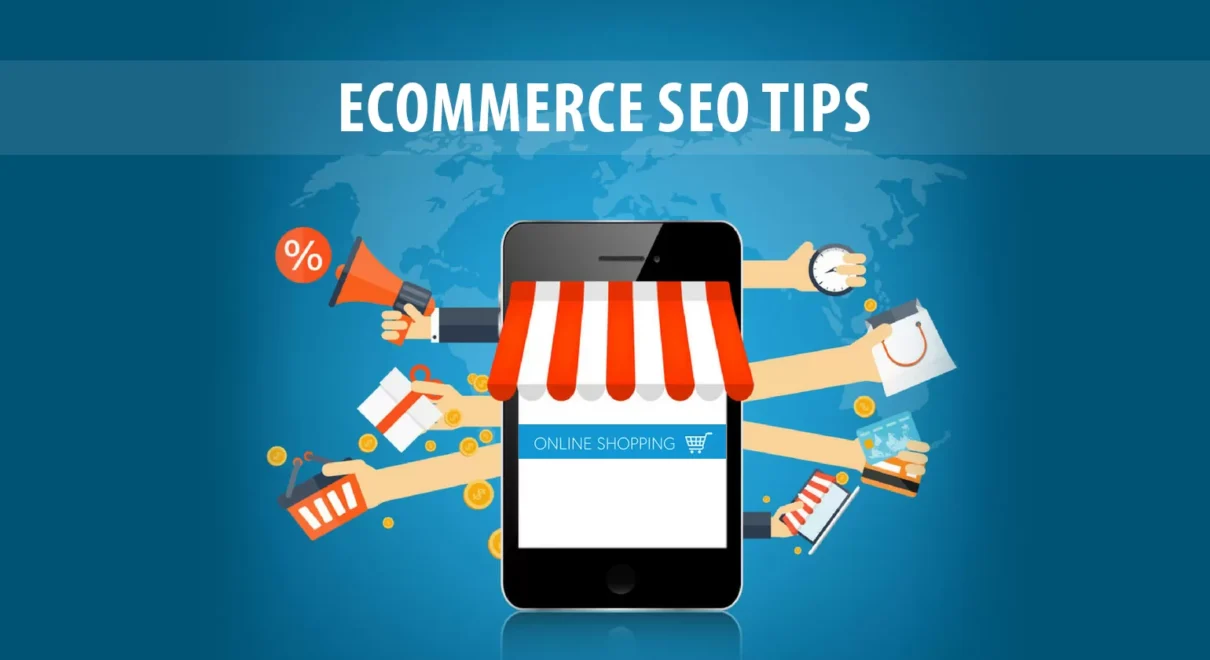In today’s competitive online marketplace, SEO (Search Engine Optimization) is crucial for e-commerce websites.
Without strong SEO strategies, even the most appealing website can struggle to attract traffic and convert visitors into customers.
In this guide, we’ll cover essential SEO tips to boost your e-commerce website’s visibility and rankings in search engine results, driving more organic traffic and increasing sales.
1. Conduct Thorough Keyword Research
Keyword research forms the foundation of any SEO strategy. For e-commerce websites, it’s essential to find keywords that align with user intent, helping you target customers who are ready to make a purchase.
- Target Long-Tail Keywords: Long-tail keywords, such as “best budget running shoes for women,” have lower competition and attract users closer to the buying stage.
- Focus on Buyer Intent: Use tools like Google Keyword Planner, Ahrefs, or SEMrush to find commercial keywords (e.g., “buy,” “discount,” “best price”) that suggest a user is ready to purchase.
- Analyze Competitors: Research your competitors’ top-ranking keywords and use them to find gaps or opportunities to differentiate your store.
2. Optimize Product Pages
Product pages are the lifeblood of any e-commerce site. Optimizing them with high-quality content is key to improving rankings.
- Unique Product Descriptions: Avoid copying manufacturer descriptions. Write original, detailed product descriptions that highlight key features, benefits, and USPs (Unique Selling Points).
- Use Engaging Product Titles: Your product titles should be descriptive and include primary keywords. Keep them concise but informative.
- Add Alt Text to Images: Optimize your product images by adding keyword-rich alt text to ensure they are indexed by search engines and appear in image searches.
3. Improve Website Structure and Navigation
A clear, easy-to-navigate website enhances both user experience and SEO performance. Search engines prioritize sites that are well-organized and easy for users to explore.
- Use a Simple URL Structure: URLs should be short, readable, and keyword-optimized (e.g., www.store.com/product-category/product-name).
- Organize Categories Logically: Group products into intuitive categories and subcategories, making it easy for users and search engines to understand the hierarchy of your website.
- Add Breadcrumbs: Breadcrumbs improve navigation and user experience, and they provide additional internal linking, which benefits SEO.
4. Create High-Quality Content
Content marketing is an effective way to build authority and attract organic traffic. Regularly publishing valuable content can improve search rankings while also keeping customers engaged.
- Write Blogs on Relevant Topics: Focus on topics that are relevant to your products and target audience. For example, if you sell fitness equipment, write articles like “Best Exercises for Home Workouts.”
- Develop Buying Guides: Create detailed guides that help customers make informed decisions. This not only provides value but also allows you to target a wide range of keywords.
- Leverage User-Generated Content: Customer reviews, testimonials, and product ratings can boost credibility, engagement, and rankings.
5. Optimize for Mobile and Page Speed
Mobile optimization is a key factor for SEO since Google uses mobile-first indexing. Additionally, page load speed is a significant ranking factor for search engines.
- Ensure Mobile Responsiveness: Use a responsive design that adapts to different screen sizes to improve the user experience on mobile devices.
- Improve Page Load Speed: Compress images, use browser caching, and reduce server response times to ensure that your website loads quickly. Tools like Google PageSpeed Insights can help identify issues.
6. Focus on Technical SEO
Technical SEO ensures that your site is easy for search engines to crawl and index. This includes optimizing the back-end elements of your site for performance and usability.
- Use an XML Sitemap: Submit an XML sitemap to Google Search Console to help search engines crawl your site more efficiently.
- Fix Broken Links: Regularly audit your site for broken links (404 errors) and fix them to maintain a smooth user experience and prevent negative SEO impact.
- Implement SSL: Secure your site with HTTPS to build trust with users and meet Google’s security standards, which can positively influence rankings.
7. Enhance Internal Linking
Internal linking is a powerful SEO tool that helps distribute page authority throughout your site, making it easier for search engines to discover and rank pages.
- Link Between Related Products: Cross-link related or complementary products to encourage visitors to explore more of your offerings.
- Use Keyword-Rich Anchor Text: When linking internally, use descriptive, keyword-rich anchor text to help search engines understand the content of the linked page.
8. Leverage Social Proof and Reviews
Customer reviews not only influence potential buyers but also positively affect SEO. User-generated content signals engagement to search engines, improving page rankings.
- Encourage Product Reviews: Request reviews from customers after purchase. Use plugins that make it easy to display these reviews prominently on your product pages.
- Incorporate Schema Markup for Reviews: Schema markup allows search engines to display star ratings and reviews in search results, boosting your click-through rate (CTR).
9. Optimize for Voice Search
As voice search grows in popularity, it’s important to adapt your SEO strategy accordingly. Voice searches tend to be longer and more conversational.
- Focus on Conversational Keywords: Target natural language queries that people are likely to speak into voice-activated devices (e.g., “Where can I buy running shoes?”).
- Optimize for Featured Snippets: Structuring content to appear in Google’s Featured Snippets increases your chances of ranking for voice search queries.
10. Build High-Quality Backlinks
Backlinks from reputable websites signal trust and authority to search engines, which can help improve your rankings.
- Partner with Influencers and Bloggers: Reach out to influencers and bloggers in your industry for product reviews or collaborations that can earn valuable backlinks.
- Submit to Directories: Ensure your site is listed in relevant directories, such as Google My Business and niche-specific directories, to increase your site’s visibility and authority.
Conclusion
Implementing these SEO strategies for your e-commerce website can significantly improve your organic traffic and sales.
By focusing on technical optimization, content quality, and user experience, you’ll create a website that ranks well in search engines and provides a seamless shopping experience for customers.






